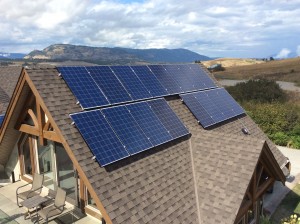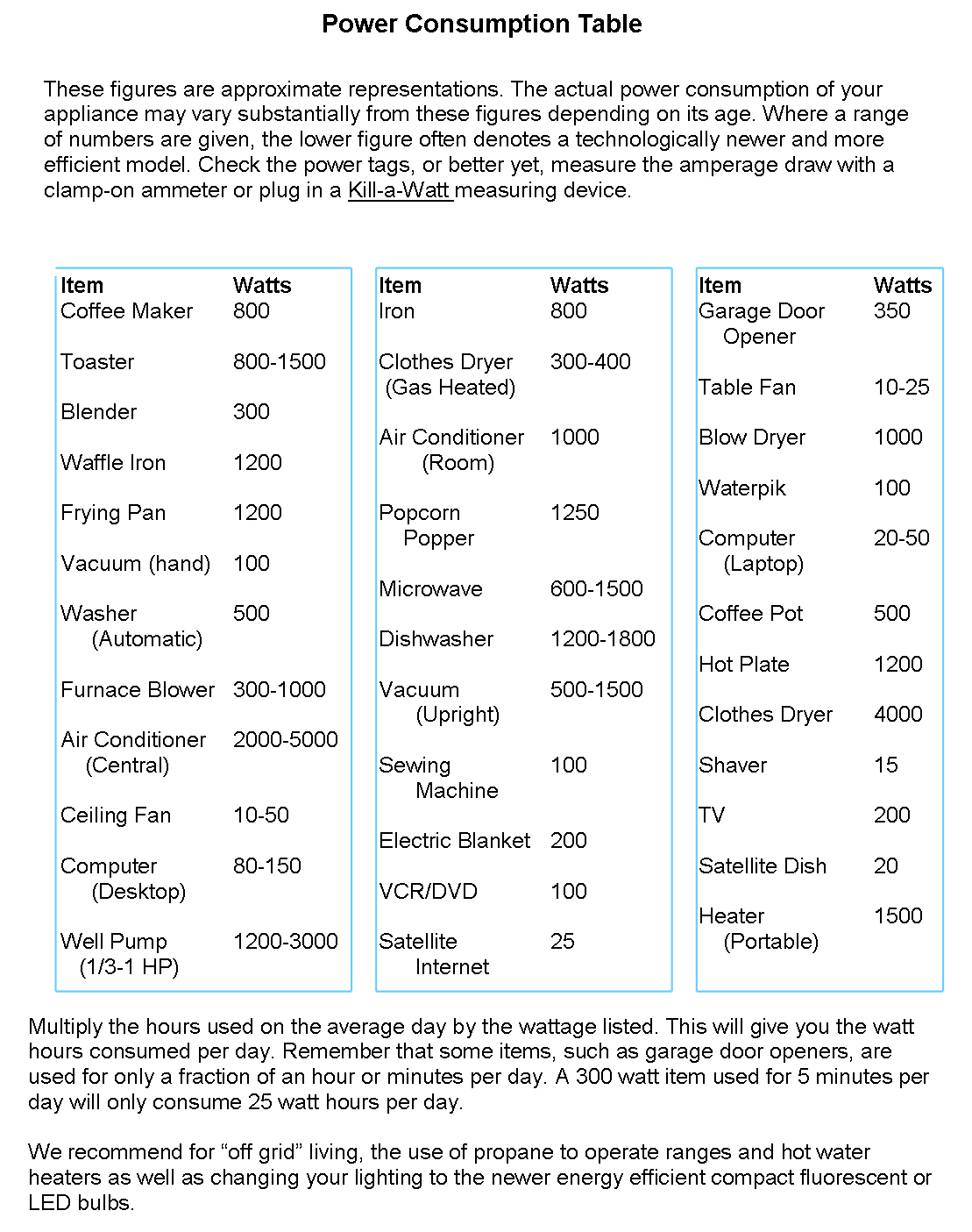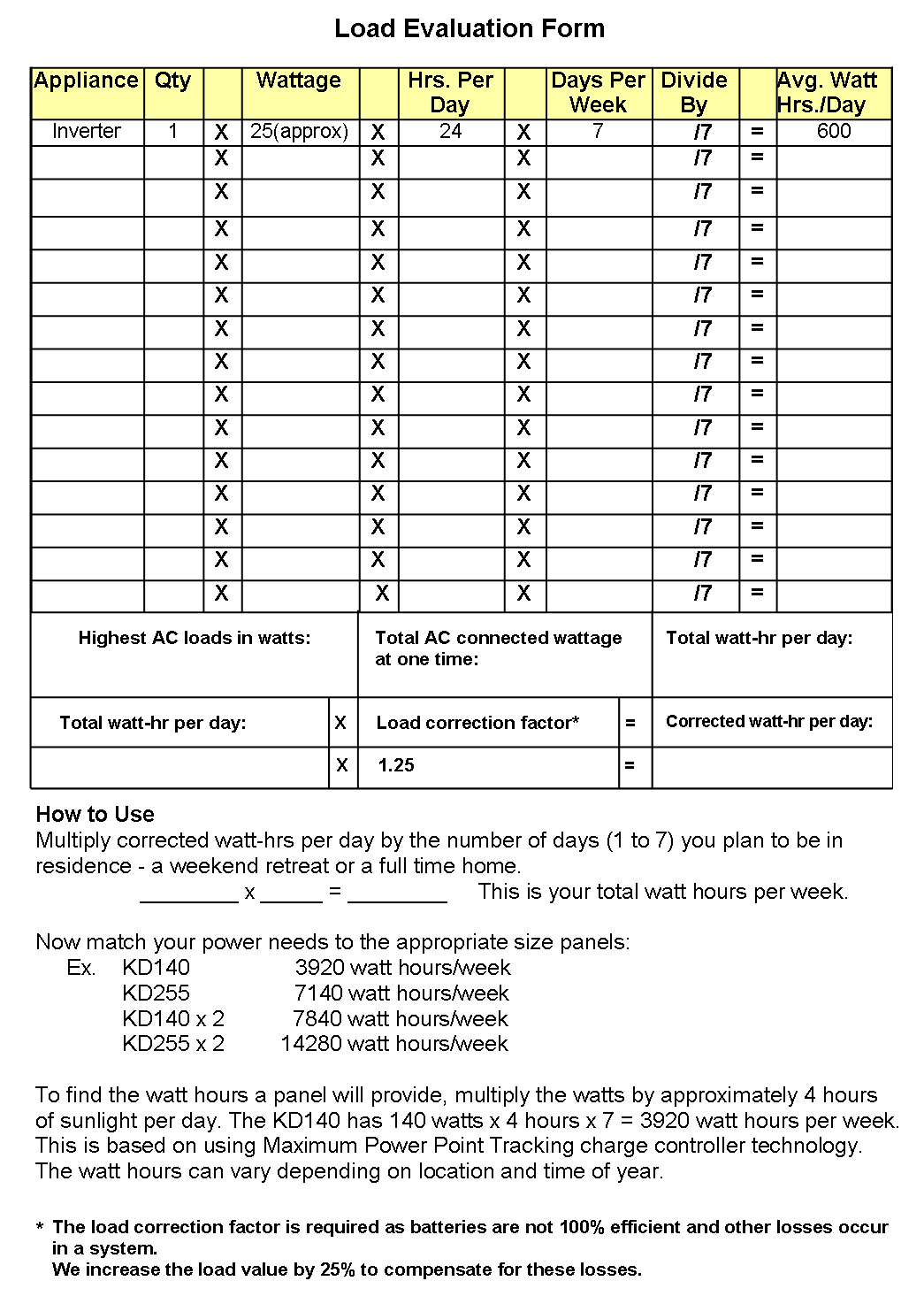Solar Power System Sizing and Appliance Power Consumption
Solar Power System Basics
Now that you know the basics, the next decision is “How Big Should I Go?”
The following formula will give you an approximate system wattage so that you can get an idea of cost and components needed for your system. Work with our experienced team at IPS to design a system which fits within your budget and can be expanded as needed.
1. How much electricity do you use each month?
Look at your electric bills from the past year and find the average number of kWh
per month then divide by 30 (days in a month).
2. How many peak sun hours do you get per day? Most of Southern BC receives 3.5 hours on an annual average. Outside this area, refer to Sun Hours chart on page 7.
3. What % of your home/business power usage will be supplied by renewable energy from your system?
This will give you your minimum system size (MSS) in watts.
For example:
1500 kWh/mo = 50 kWh/day 50 kWh/day = 14.29 x 1000 = 14290 watts
30 days 3.5 sun hours
14290 watts x 50% (your production) = 7145 watts (minimum system size) If you want to produce 75% of your electricity, use 75; etc.
The MSS is the number of watts per hour your system needs to produce during peak sun hours in order to meet your needs. You can use this number to figure out the appropriate system size.
Note: These figures are approximate and do not take into account variable efficiency ratings of the solar panels or inverters.


3.5 hrs is the average annual full sun hours per day
Full sun hours = 1000 watts per meter squared per hour
Contact us today
Phone: 250-769-2843
Email: Sales@IPWR.net
#101 – 2387 Dominion Rd
West Kelowna, BC V1Z 2Y4
Canada


